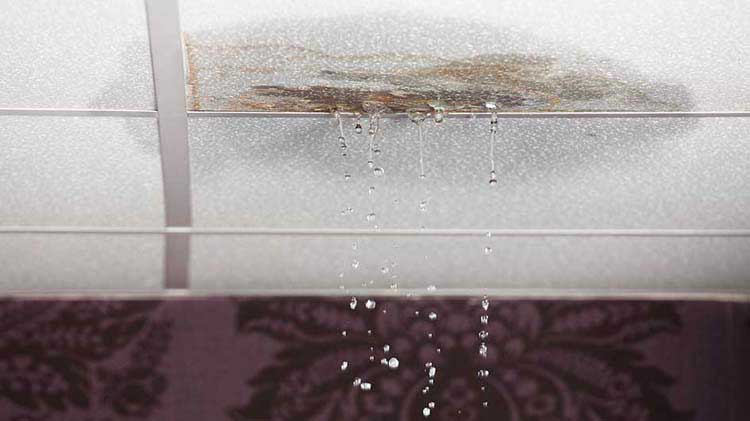Explaining the Six Most Common Causes of Home Water Leaks
Explaining the Six Most Common Causes of Home Water Leaks
Blog Article
Each person seems to have their own perception when it comes to How to Find Water Leaks.

Leakages not just cause waste of water but can also create unneeded damages to your house and advertise unwanted organic development. By recognizing and looking for everyday scenarios that trigger leaks, you can protect your residence from future leakages as well as unnecessary damage.
Instantaneous temperature level modifications.
Extreme temperature level adjustments in our pipes can cause them to increase and get unexpectedly. This development and tightening might trigger cracks in the pipelines, especially if the temperature level are below freezing. It would certainly be best if you kept an eye on just how your plumbing works. The existence of the formerly discussed conditions often indicates a high danger.
Corroded water supply
This may be the reason of staining or bending on your water pipes. If our plumbing system is old, think about changing the pipelines considering that they are at a greater threat of deterioration than the more recent versions.
Malfunctioning Pipeline Joints
The factor at which your pipelines attach is regularly the weakest web link in the waterline. Pipeline joints can degrade gradually, causing water leakages. The majority of pipeline joints are not conveniently noticeable. If you have loud pipelines that make ticking or banging sounds, specifically when the warm water is turned on, your pipeline joints are possibly under a great deal of stress. It is a good idea to have your plumber check your system yearly.
Trespassing roots
Most water leakages begin outside your home as opposed to inside it. If you observe an unexpected reduction in water pressure, claim in your faucet, take some time to go out as well as examine your backyard. You may discover wet spots or sinkholes in your lawn, and that may mean that tree origins are getting into water lines triggering water to seep out. You can have your plumber look for invasion, especially if you have trees or shrubs near your building.
Poor Water Connectors
At times, a leakage can be caused by loosened hose pipes and also pipes that supply your appliances. Typically, moving is what creates the loose water Links. You may find when it comes to a washing equipment, a hose pipe might spring a leakage due to trembling during the spin cycle. In case of a water connections leakage, you may observe water running directly from the supply line or puddles around your devices.
Blocked Drains
Clogged drains pipes could be irritating and also inconveniencing, but they can often end up triggering an overflow resulting in break pipes. Keep getting rid of any materials that might drop your drains that might obstruct them to avoid such troubles.
All the above are sources of leakages however not all water leakages arise from plumbing leaks; some leaks may originate from roof leaks. All leaks must be fixed right away to prevent water damages.
Leakages not just cause waste of water but can likewise trigger unneeded damage to your home and promote unwanted natural growth. By looking as well as recognizing for everyday situations that trigger leakages, you can secure your residence from future leaks as well as unneeded damage. Today, we will look at six leak causes that may be causing your pipes to drip.
At times, a leakage can be triggered by loosened pipes and also pipelines that provide your appliances. In situation of a water connections leakage, you might discover water running directly from the supply line or puddles around your appliances.
How To Check For Water Leak In Your Home
How To Check for Leaks
The average household's leaks can account for nearly 10,000 gallons of water wasted every year and ten percent of homes have leaks that waste 90 gallons or more per day. Common types of leaks found in the home are worn toilet flappers, dripping faucets, and other leaking valves. These types of leaks are often easy to fix, requiring only a few tools and hardware that can pay for themselves in water savings. Fixing easily corrected household water leaks can save homeowners about 10 percent on their water bills.
To check for leaks in your home, you first need to determine whether you're wasting water and then identify the source of the leak. Here are some tips for finding leaks:
Take a look at your water usage during a colder month, such as January or February. If a family of four exceeds 12,000 gallons per month, there are serious leaks.
Check your water meter before and after a two-hour period when no water is being used. If the meter changes at all, you probably have a leak.
Identify toilet leaks by placing a drop of food coloring in the toilet tank. If any color shows up in the bowl after 10 minutes, you have a leak. (Be sure to flush immediately after the experiment to avoid staining the tank.)
Examine faucet gaskets and pipe fittings for any water on the outside of the pipe to check for surface leaks.
Undetected water leaks can happen without the home or business owner even realizing. If you suspect a water leak, but not able to find the source. It is time to contact a professional water leak detection service, The Leak Doctor.
How To Find a Water Leak In Your Home
https://www.leakdoctor.com/blog/How-To-Check-For-Water-Leak-In-Your-Home_AE197.html

Do you really like reading about Top Causes of Home Water Leaks? Write a comment directly below. We will be interested to see your opinion about this posting. We are looking forward to see you back again in the near future. Sharing is nice. You just don't know, you will be doing someone a favor. Thank-you for taking the time to read it.
Visit My Web Page Report this page